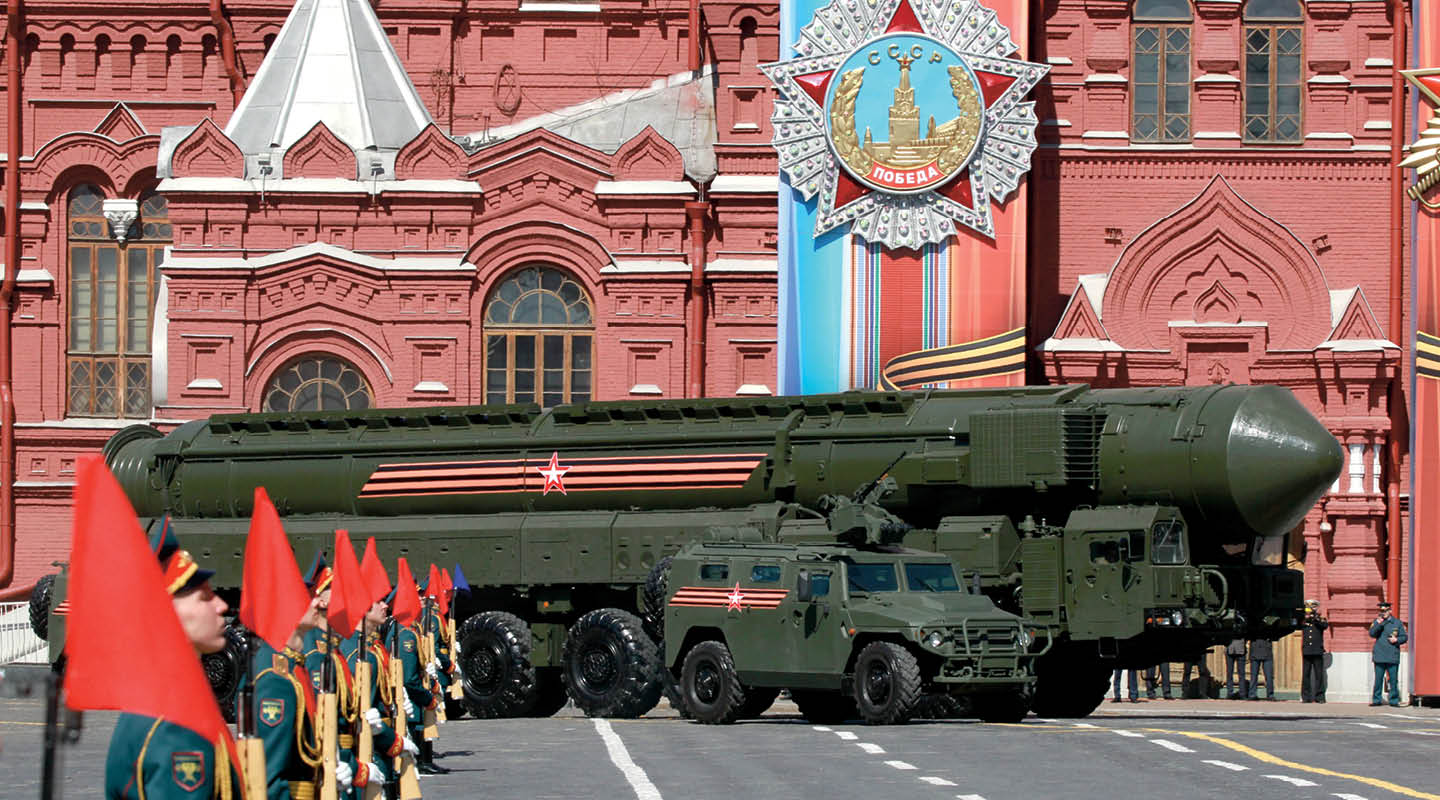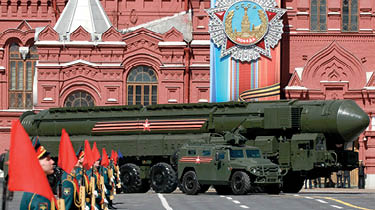Before the fear of being blown up by terrorists on a plane, a train, or a sidewalk gave millions of people sleepless nights, it was nuclear annihilation at the hands of the world’s two superpowers that people around the globe worried about.
By the mid-1980s, after decades of squaring off in the Cold War, the United States and the Soviet Union had amassed 63,000 nuclear weapons. If one of those weapons had ever been used—even accidentally—the resulting nuclear war would have destroyed both sides.
But after years of global protests and skyrocketing defense budgets, American and Soviet leaders stepped back from the brink of disaster and began a process of arms control diplomacy that gradually shrank those arsenals by nearly 90 percent. For decades, that process of diplomacy continued.
Now, however, a landmark arms control treaty—the 1987 Intermediate-Range Nuclear Forces Treaty, or I.N.F.—is being ripped up. The United States announced in February that it would withdraw from the treaty, which bans the possession and deployment of all land-based missiles with a range of 300 to 3,400 miles, because Russia has long been violating its terms.
“We can no longer be restricted by the treaty while Russia shamelessly violates it,” Secretary of State Mike Pompeo declared. In response, Russia said it too would abandon the treaty.
The fear of being blown up by terrorists on a plane, a train, or a sidewalk gives millions of people sleepless nights. But in the past, it was nuclear annihilation at the hands of the world’s two superpowers that people around the globe worried about.
The United States and the Soviet Union squared off for decades during the Cold War. By the mid-1980s, both nations had amassed 63,000 nuclear weapons. If one of those weapons had ever been used, the resulting nuclear war would have destroyed both sides. And it wouldn’t have even mattered if it was an accident.
The arms race led to years of global protests and skyrocketing defense budgets. Then, American and Soviet leaders stepped back from the brink of disaster. They began a process of arms control diplomacy that gradually shrank those arsenals by nearly 90 percent. For decades, that process of diplomacy continued.
But now, a landmark arms control treaty is being ripped up. The Intermediate-Range Nuclear Forces Treaty, or I.N.F, was put into place in 1987. It bans the possession and deployment of all land-based missiles with a range of 300 to 3,400 miles. The United States announced in February that it would withdraw from the treaty because Russia has long been violating its terms.
“We can no longer be restricted by the treaty while Russia shamelessly violates it,” Secretary of State Mike Pompeo declared. In response, Russia said it too would abandon the treaty.



